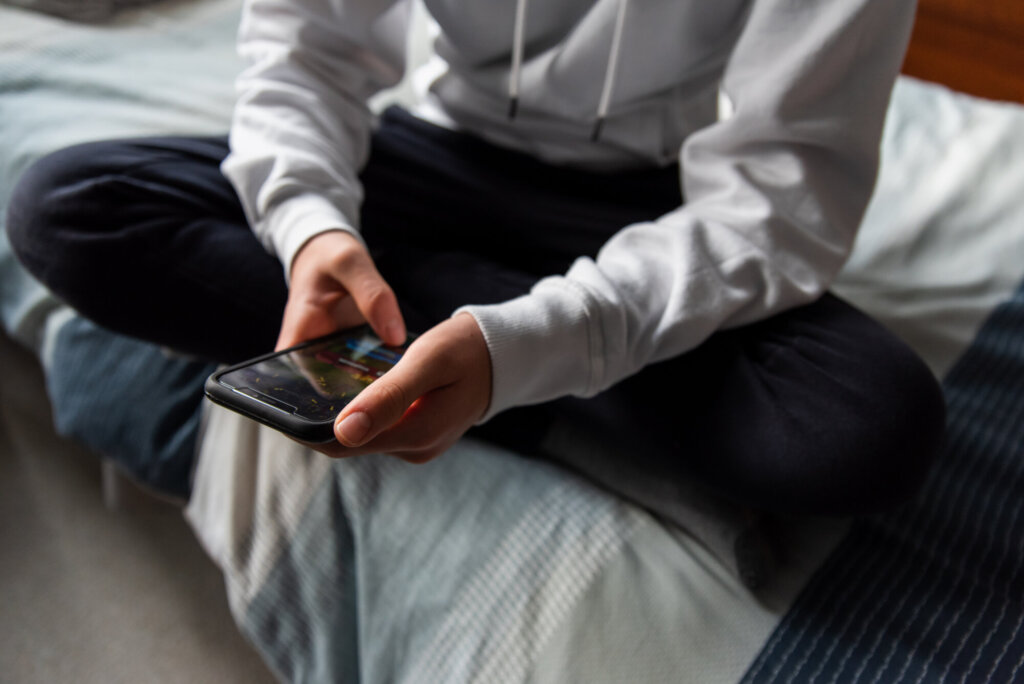How You Can Protect Kids From Sextortion Through Awareness and Action
Start the Conversation, Build Trust, and Empower Your Child to Stay Safe Online
Sextortion is one of the fastest-growing forms of child sexual exploitation — yet many young people and adults are not aware of the threat it poses. More importantly, adults often do not know how to protect kids from the threats of sextortion.
Sadly, sextortion is happening every day across multiple online platforms, with devastating emotional, psychological, and even financial impacts on children and teens. In 2024 alone, the National Center for Missing and Exploited Children (NCMEC) received more than 456,000 reports of online enticement, much of it involving sextortion.
Despite how terrifying this crime is, prevention and response are possible. Prevention starts with regular, honest conversations, digital safety tools, and creating a space where children know they will always be believed, supported, and loved — no matter what.
This article provides answers to critical questions, including:
- What is sextortion?
- How does sextortion happen?
- What danger does sextortion pose to kids?
- How can you protect young people from sextortion?
What Is Sextortion?
Sextortion is also known as digital blackmail. Scammers often pose as peers or potential romantic interests to trick and coerce young people into sharing sexual images or videos. Once they’ve obtained them, they use threats — often to publicly share the content — unless the child sends more explicit images, videos, or money (financial sextortion).
According to Thorn, 1 in 5 teens have already experienced sextortion, and Snapchat’s 2024 study found that nearly 1 in 4 youth aged 13 to 24 have been victims.
NCMEC reports that it received 183,000 reports on online enticement, including sextortion, in 2023. Between 2021 and 2023, NCMEC reported a 323% increase in these activities.
How Does Sextortion Happen?
Sextortion may happen when a child has shared an image with someone they thought they knew or trusted. Most often, young people are targeted by an individual they met online who obtained a sexual image from the child through deceit or coercion. In many cases, the blackmailers may have stolen or taken images of another person, and they are communicating through a fake account.
“In an initial conversation, it starts out friendly and often reciprocal. … The abuser is trying to gain the trust, groom the child, and normalize this kind of behavior,” said Detective Sergeant Gerald Yott of the Michigan State Police Department in a video conversation with Josh Bissell of Children’s Advocacy Centers of Michigan. “They come back to either monetize this sexual blackmail or to get more images or sexual behaviors.” (Watch the “Concept of Sextortion” video here.)
Two-thirds of teens surveyed reported being targeted in some way, often on social media or gaming platforms. While sextortion can happen to anyone, teen boys ages 13 to 17 are disproportionately targeted.
Alarmingly, in the age of Artificial Intelligence (AI) and manipulated media, sextortion can happen even if a child has never shared an image. Predators can generate fake photos or use AI to make images indistinguishable from real photos and videos.
What Danger Does Sextortion Pose to Kids?
Once images are released digitally, it is incredibly difficult to remove them. “There are plenty of sites these photos get posted on, they get circulated in schools,” said Detective Sergeant Yott. “It’s really hard to sanitize or get these images back or keep them from spreading.”
The kids often don’t feel there is a lifeline or a place for them to turn, and sextortion has resulted in an increasing number of suicides among young people. The role of caregivers is extremely important in education about sextortion, prevention of an incident, and support in the event that an incident takes place.
How Can You Protect Kids From Sextortion?
Open communication: Talk in advance about sextortion and its risks with your children. Ensure they understand the risks of sharing images of themselves and the frequency of targeting on social media and gaming platforms. Be sure kids know you will support them, no matter what happens. Children and young people need to know they can come to trusted adults without fear, blame, or shame.
A supportive environment: Our reactions matter, especially in how we respond to news stories and disclosures about sextortion. If your child is ever targeted, thank them for telling you. Assure them they are not alone and that you will find all the help that is available. NCMEC encourages adults to remind young people that the blackmailer is to blame, not the child. Even if a young person made a choice they regret, what the blackmailer is doing is a crime.
Report any incidents: On platforms where the young person is being blackmailed, report the account via the platform’s safety feature. Block the suspect, but do not delete your profile or messages, as that can help absolve the blackmailer. Report sextortion to NCMEC and the FBI cybercrime portal.
Get help removing photos: To find help removing images from online platforms, learn where photos are out there and visit Take It Down to try to remove them. Take It Down is a free, anonymous service that can help remove or stop the online sharing of nude, partially nude, or sexually explicit images or videos of a young person under the age of 18.
Find more resources to support kids and prevent sextortion at the NCMEC’s dedicated site.

